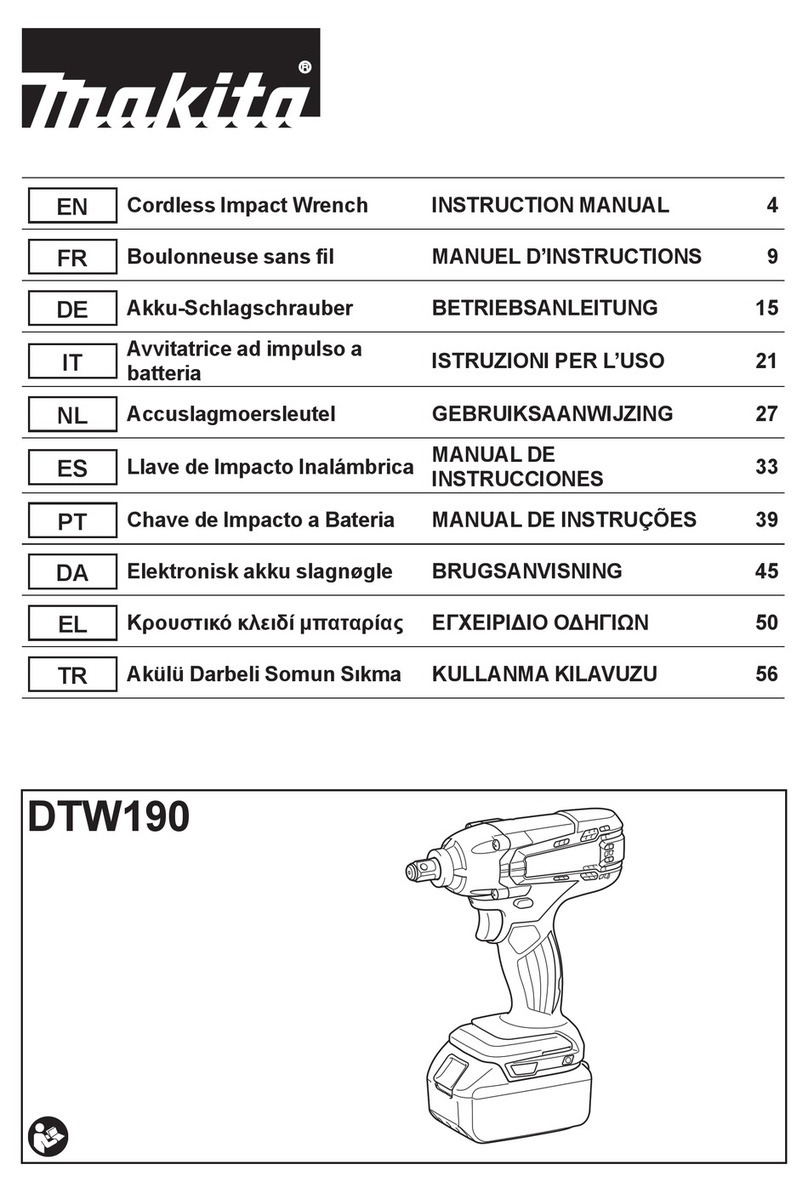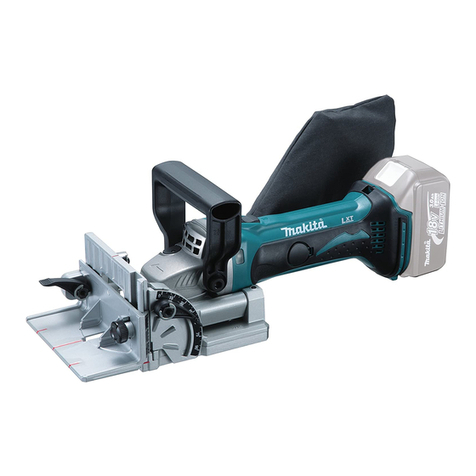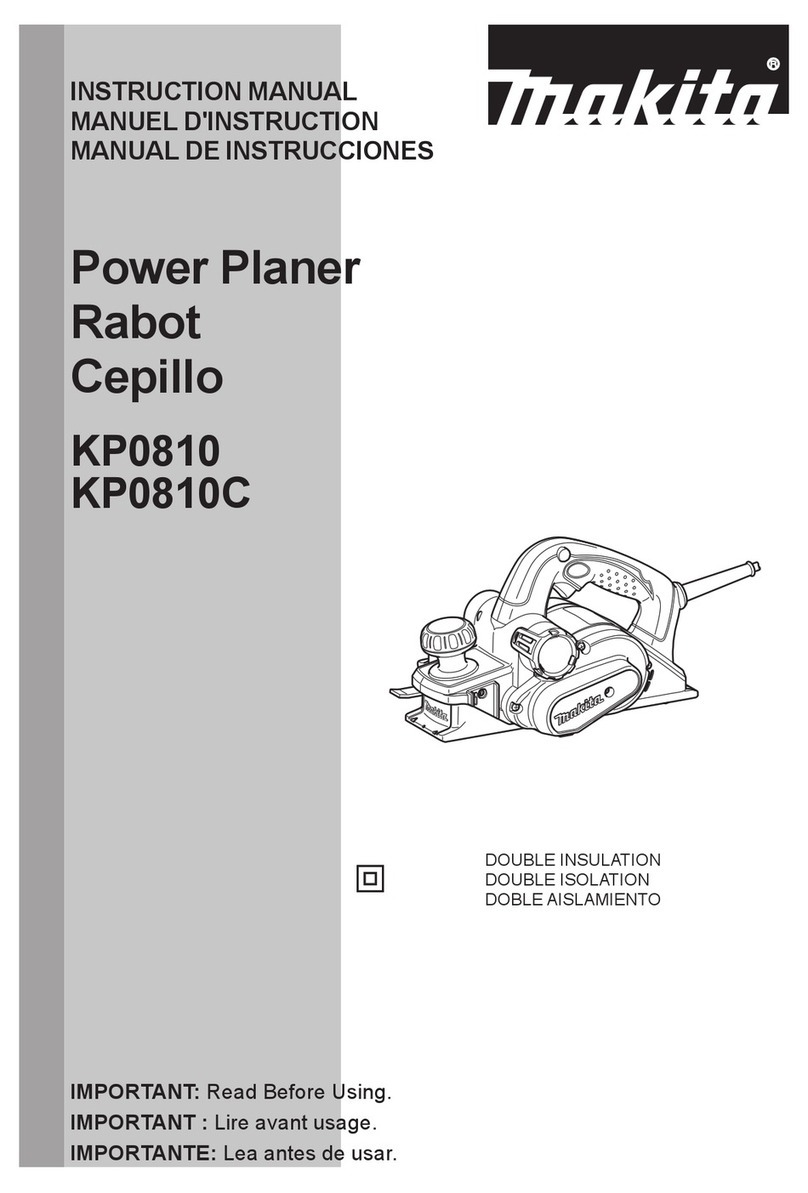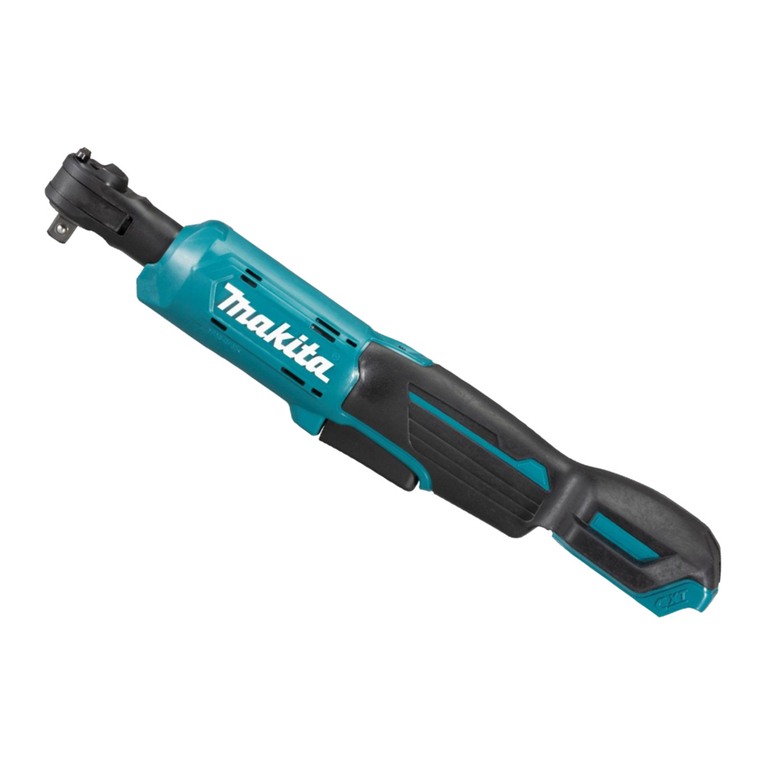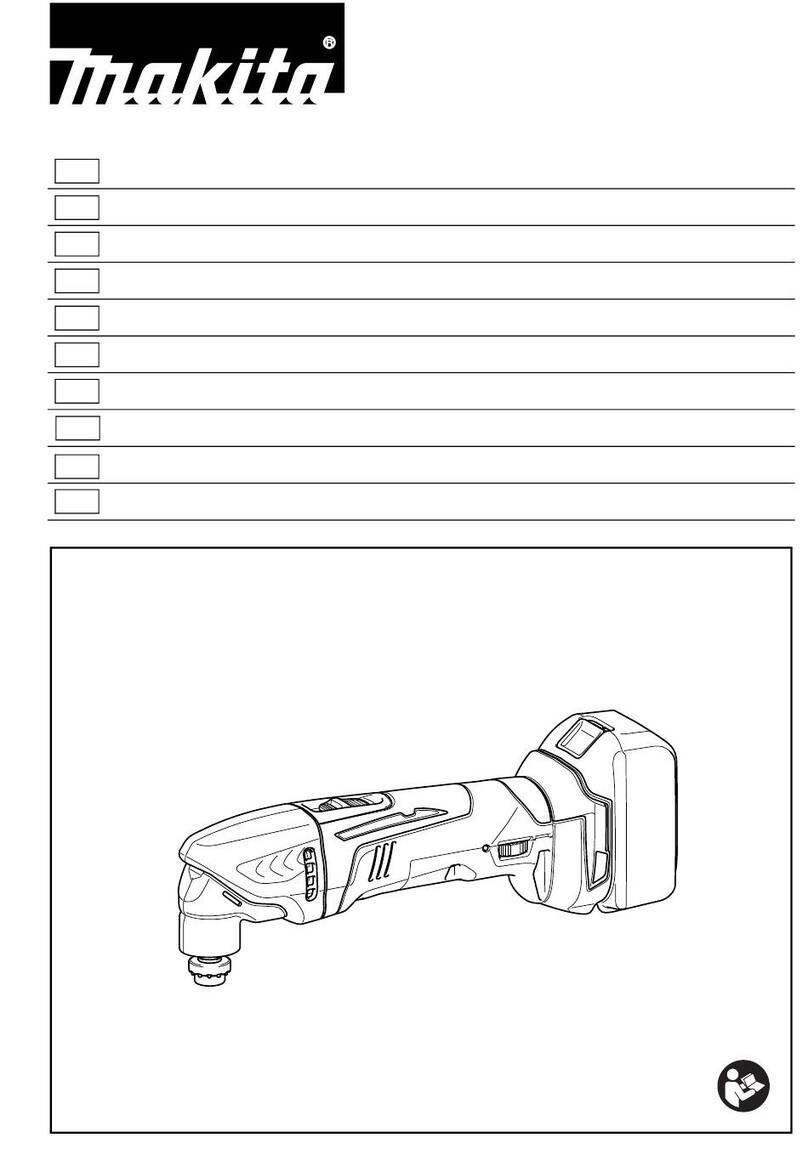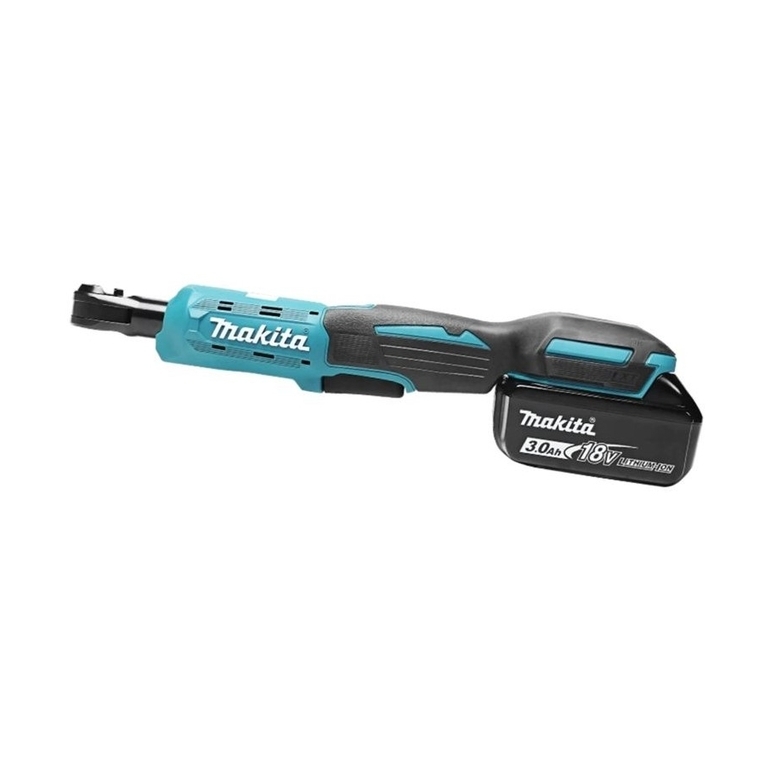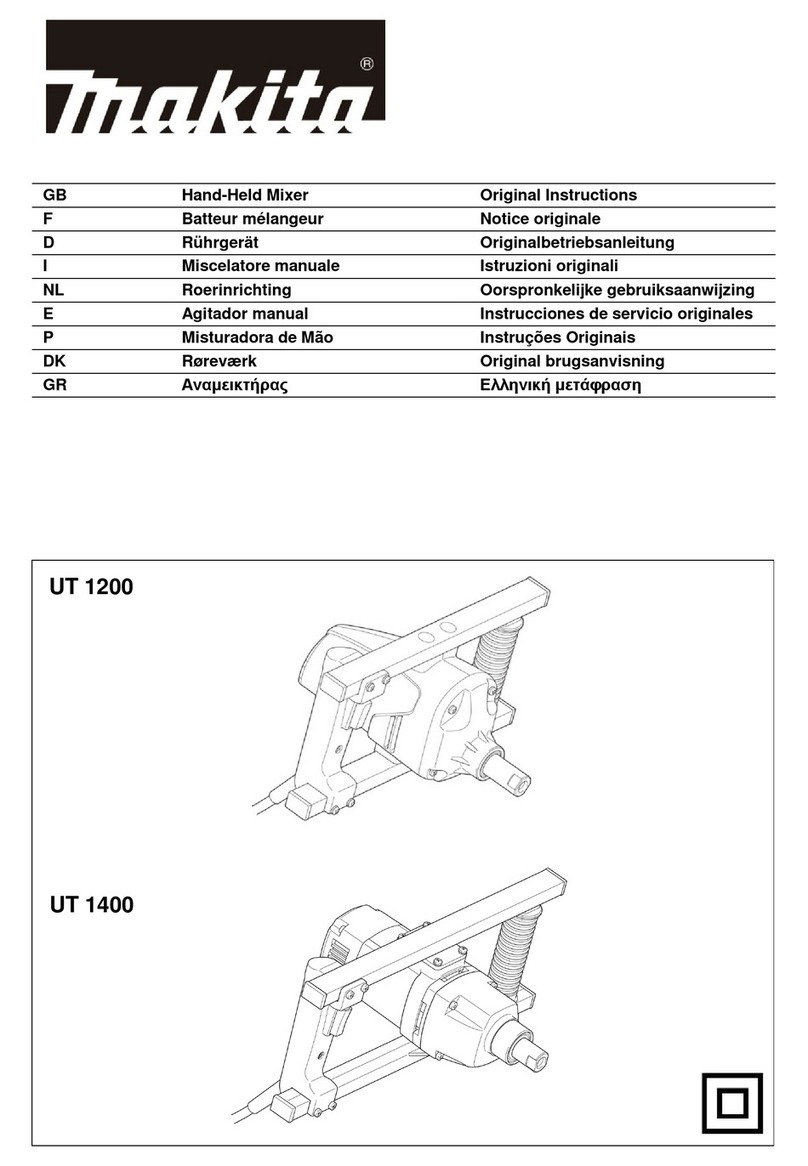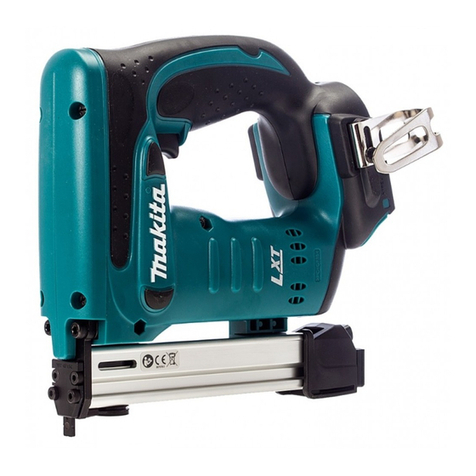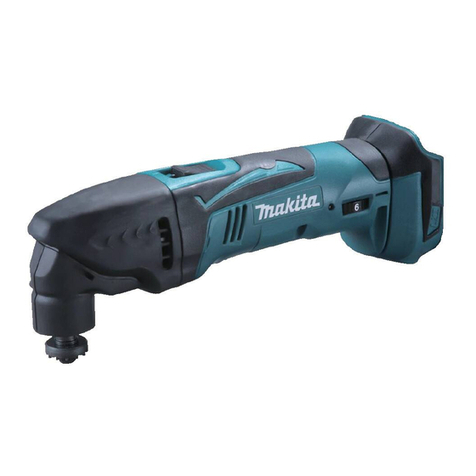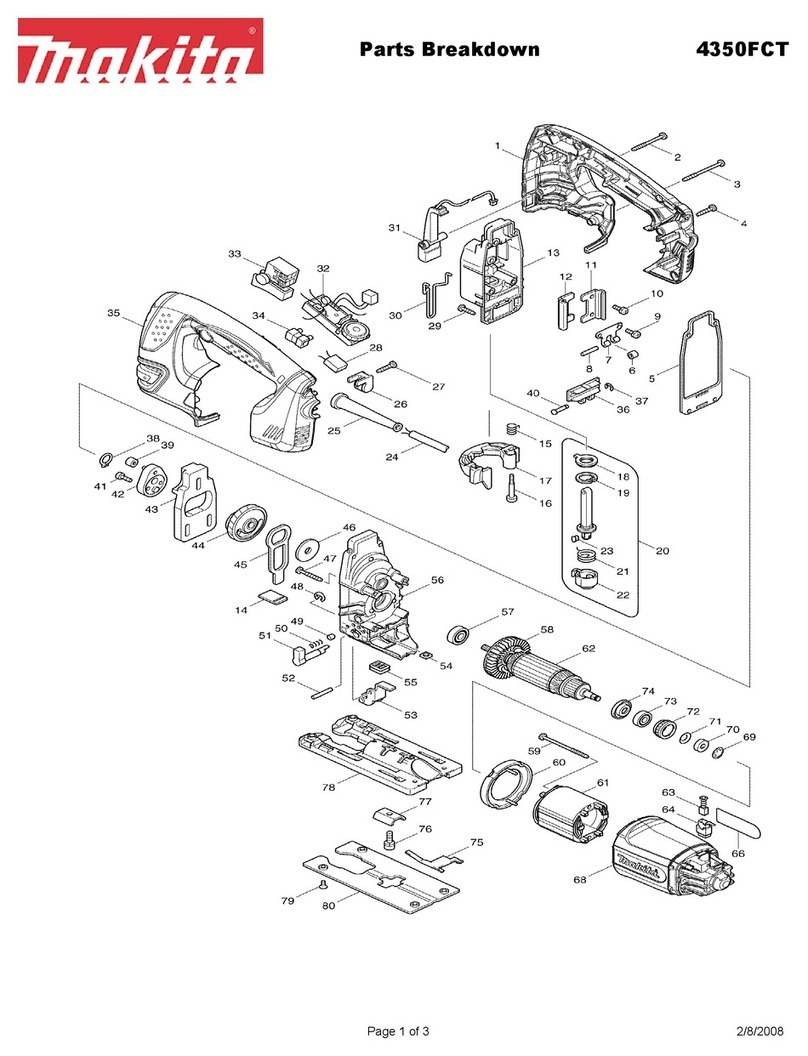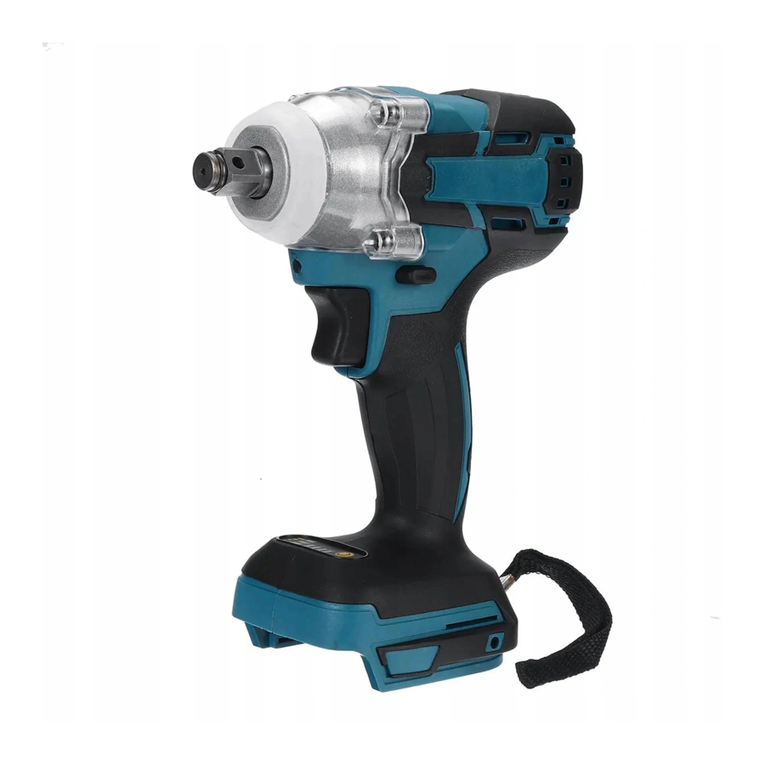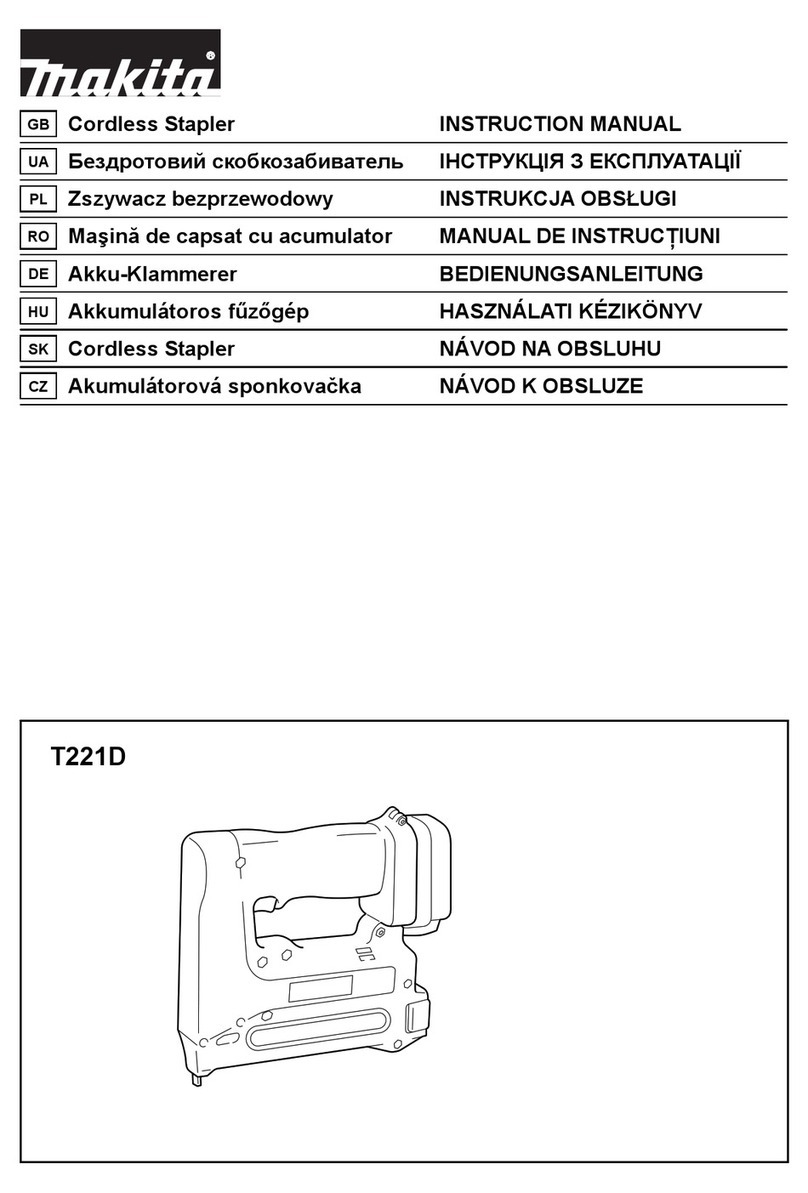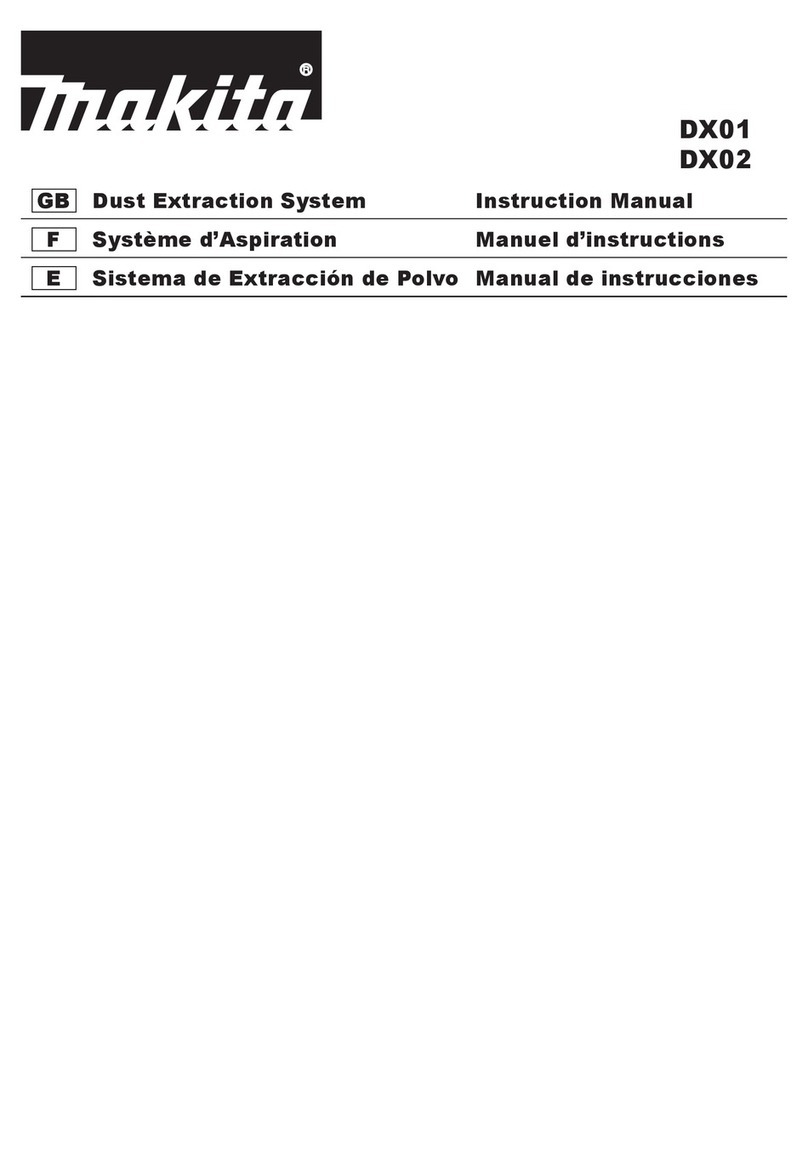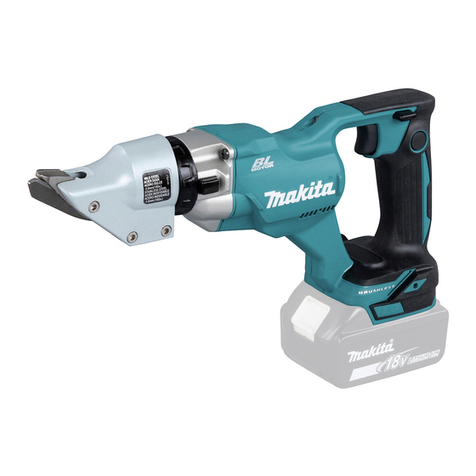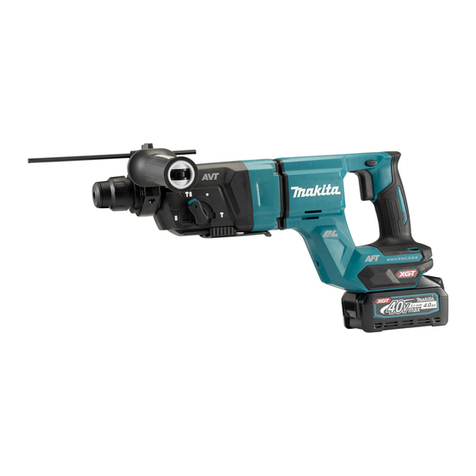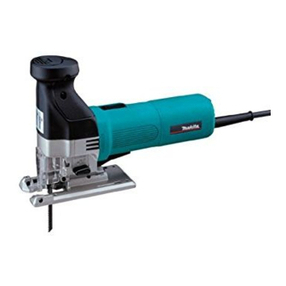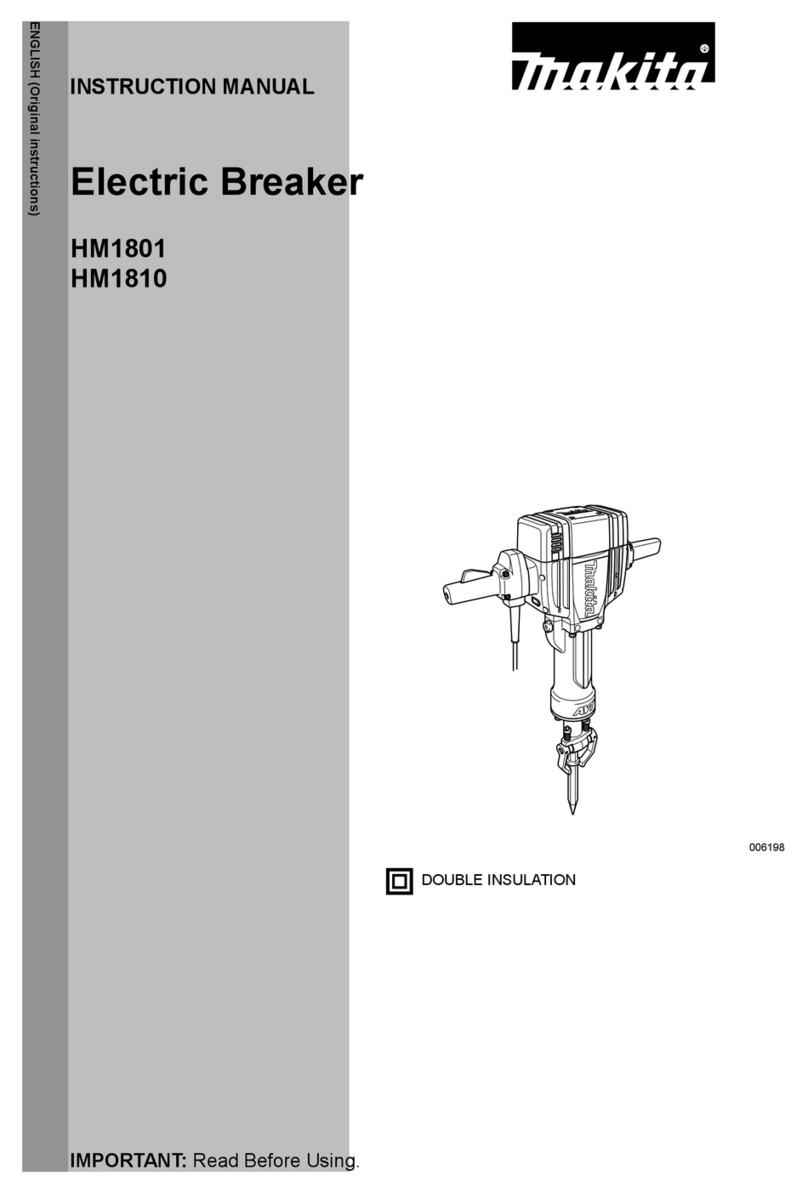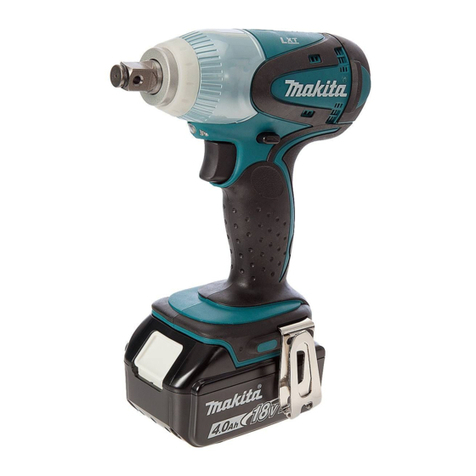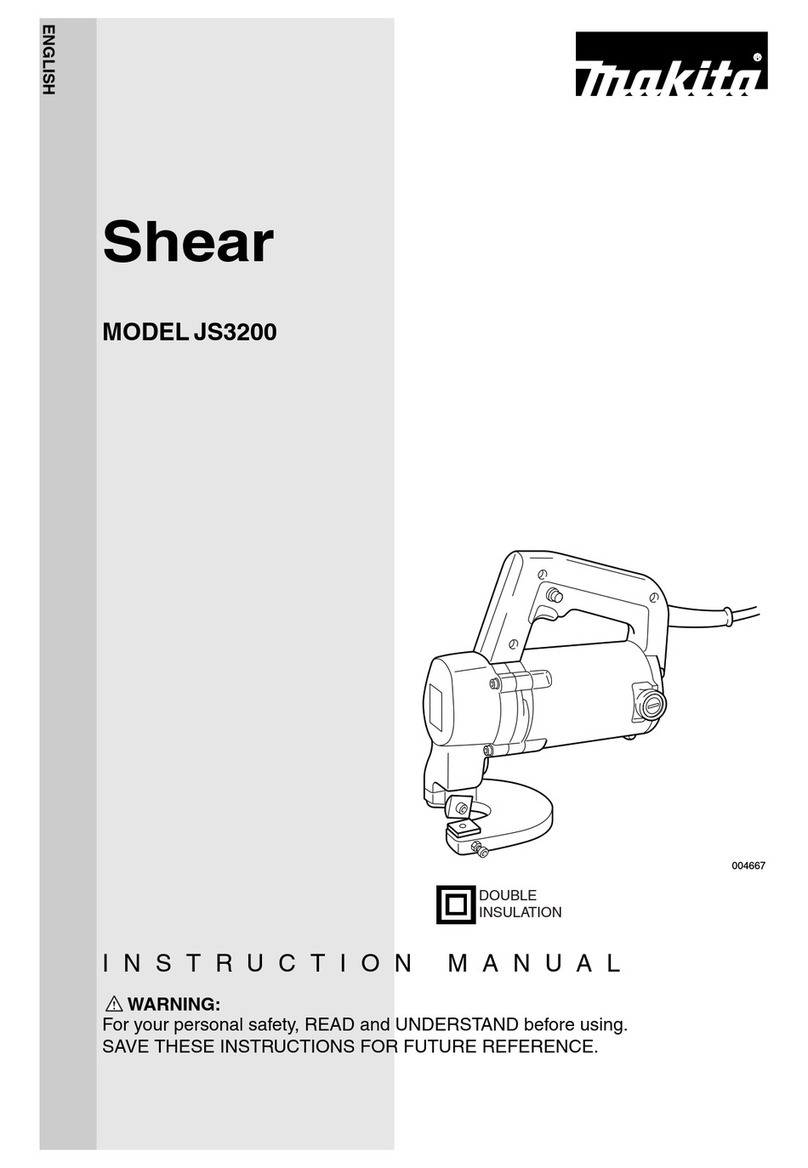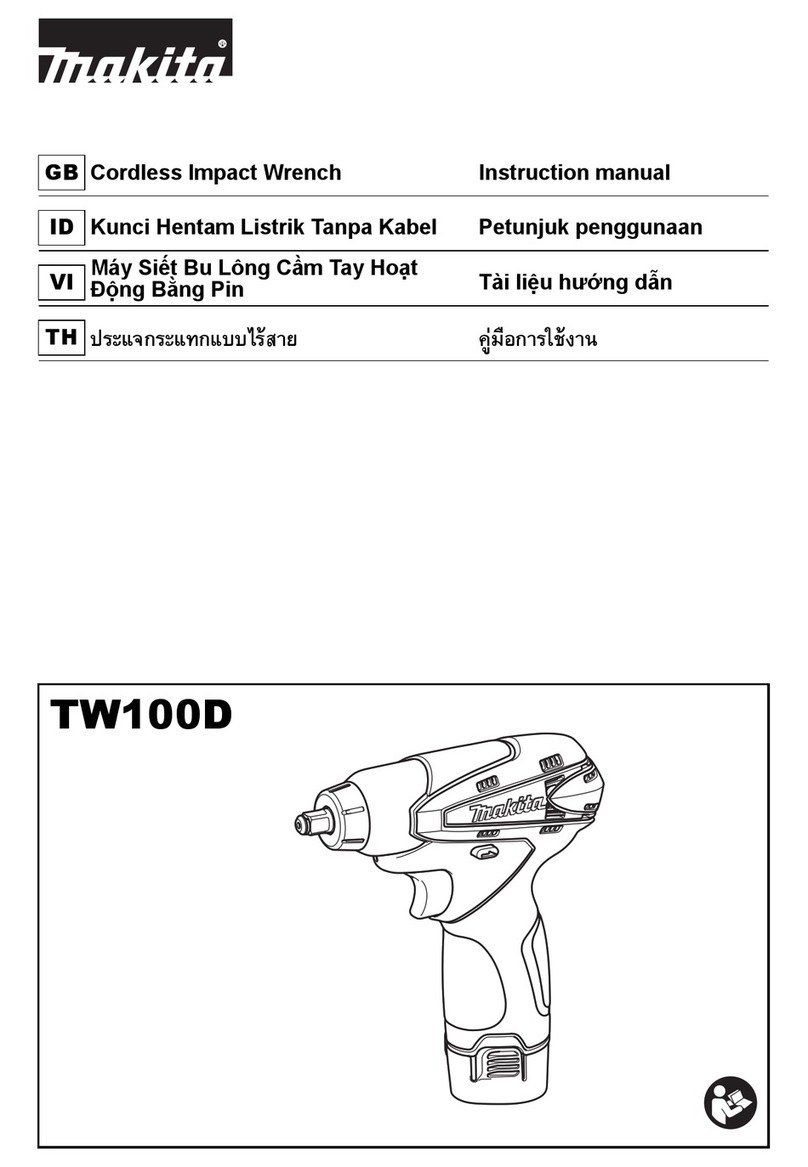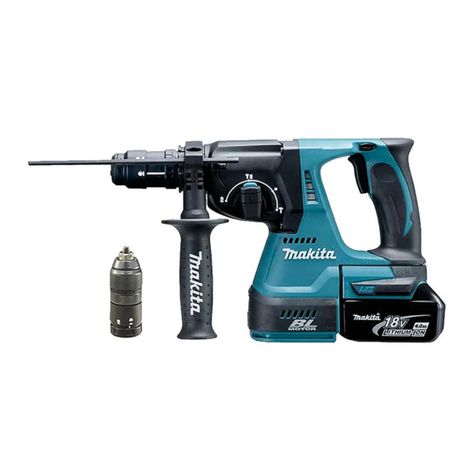7
WARNING:
DO NOT let comfort or familiarity with product
(gained from repeated use) replace strict adherence
to safety rules for the subject product. MISUSE or
failure to follow the safety rules stated in this
instruction manual may cause serious personal
injury.
FUNCTIONAL DESCRIPTION
CAUTION:
• Always be sure that the tool is switched off and
unplugged before adjusting or checking function on
the tool.
Adjusting the depth of cut
Fig.1
6 cutting depths can be preset according to the size of
biscuit to be used or if trimming the wall or ceiling panels
as explained later. Rotate the stopper until the pointer
points to the appropriate size marked on the stopper.
Refer to the table below for the correspondence
between the sizes marked on the stopper and the biscuit
size. Fine adjustments to the cutting depth can be made
by turning the adjusting screw after loosening the hex
nut. This may become necessary after the blade has
been resharpened a few times.
Size onstopper0 1020 S D MAX
Biscuitsize 01020 ---
Depth of cut 8 mm 10mm
12.3mm
13mm
14.7 mm
20 mm
006424
Angle guide
Fig.2
Fig.3
The angle guide can be moved up and down to adjust
the position of the blade in relation to the top of the
workpiece.
To adjust the angle guide height, loosen the lock lever
down and rotate the knob until the pointer points to the
desired scale graduation marked on the angle guide.
Then tighten the lock lever up to secure the angle guide.
The scale on the angle guide indicates the distance from
the top of the workpiece to the center of the blade
thickness.
Fence
Fig.4
Fig.5
The angle of the fence can be adjusted between 0° and
90° (positive stops at 0°, 45° and 90°). To adjust the
angle, loosen the lock lever and tilt the fence until the
pointer points to the desired graduation on the angle
scale. Then tighten the lock lever to secure the fence.
When the fence is set at 90°, both the distance from the
center of the blade thickness to the fence and the
distance from the center of the blade thickness to the
bottom of the base are 10 mm.
Set plate
Fig.6
Fig.7
Use the set plate as shown in the figures when cutting
slots in thin workpieces.
Switch action
Fig.8
CAUTION:
• Before plugging in the tool, always check to see
that the slide switch actuates properly and returns
to the "OFF" position when the rear of the slide
switch is depressed.
To start the tool, slide the slide switch toward the "I (ON)"
position. For continuous operation, press the front of the
slide switch to lock it.
To stop the tool, press the rear of the slide switch, then
slide it toward the "O (OFF)" position.
ASSEMBLY
CAUTION:
• Always be sure that the tool is switched off and
unplugged before carrying out any work on the
tool.
Removing or installing the blade
Fig.9
CAUTION:
• When installing the cutter blade, mount the inner
flange with the side marked "22" facing toward you.
• When installing the circular saw blade, mount the
inner flange with the side marked "22" facing
toward the tool.
To remove the blade, loosen the clamp screw and open
the blade cover. Push the shaft lock and loosen the lock
nut using the lock nut wrench. To install the blade, first
mount the inner flange.
Then mount the blade and the lock nut. Securely tighten
the lock nut using the lock nut wrench. Close the blade
cover and tighten the clamp screw to secure the blade
cover.
CAUTION:
• Use only Makita lock nut wrench provided to
remove or install the blade.
• Always check the depth of cut after replacing the
blade. Reajust it if necessary.
Dust bag
Fig.10
To attach the dust bag, fit it onto the dust nozzle. If the
dust bag becomes an obstacle to your work, turn the
dust nozzle to change the dust bag position.
When the dust bag is about half full, switch off and
unplug the tool. Remove the dust bag from the tool and
pull the bag's fastener out. Empty the dust bag by
tapping it lightly to remove as much of the dust as
